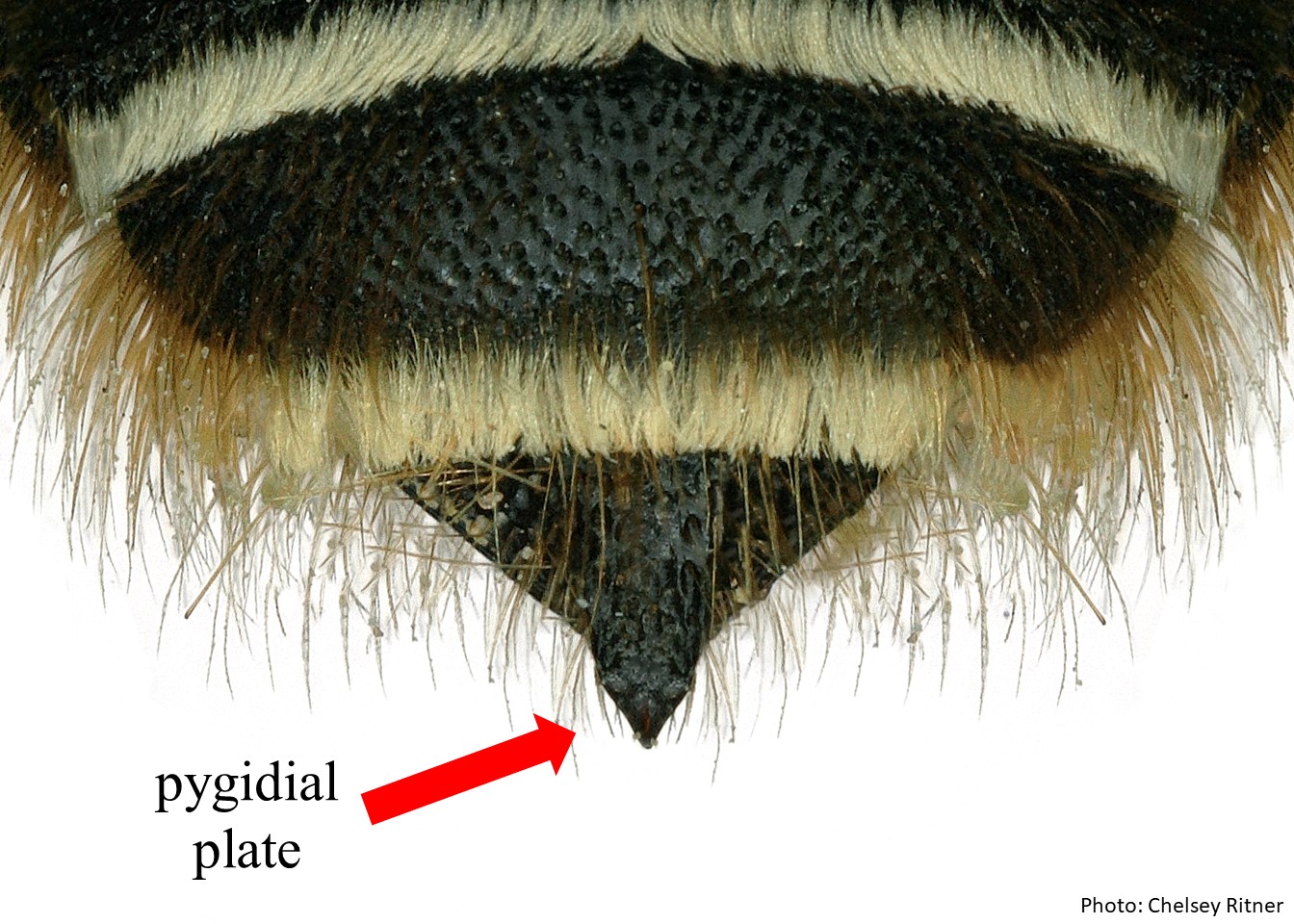Taxonomy
Family: Apidae
Subfamily: Xylocopinae
Tribe: Xylocopini
Genus: Xylocopa
Subgenus: Xylocopoides, Michener 1954Michener 1954:
Michener, C.D. 1954. The bees of Panama. Bulletin of the American Museum of Natural History 104: 1ndash;176.
Common name: Carpenter bee
Background
Xylocopa (
Xylocopoides) are small to large bees, 10-26 mm or more, that have shiny black
integumentintegument:
a tough, protective outer layer
with a slight green or blue metallic sheen. Most species in this subgenus have thick, black
pubescencepubescence:
short, fine hair
throughout their body or some pale
pubescencepubescence:
short, fine hair
on its thorax and upper abdomen. Their wings range from light brown to dark brown and vary in their amount of iridescence (
Hurd and Moure 1963Hurd and Moure 1963:
Hurd, P.D. and J.S. Moure. 1963. A Classification of the Large Carpenter Bees (Xylocopine) (Hymenoptera: Apoidea). University of California Publications in Entomology (Vol. 29). Berkeley and Los Angeles: University of California Press, 365 pp.).
Diversity
Xylocopa (
Xylocopoides) includes 5 species (
Michener 2007Michener 2007:
Michener, C.D. 2007. The Bees of the World (2nd ed.). Johns Hopkins University Press, Baltimore and London, 953 pp.;
Mawdsley 2017Mawdsley 2017:
Mawdsley, J. R. 2017. Taxonomy of the African large carpenter bees of the genus Xylocopa Latreille, 1802, subgenus Xenoxylocopa Hurd amp; Moure, 1963 ( Hymenoptera , Apidae ). Zookeys (655): 131-139.).
Distribution
Xylocopa (
Xylocopoides) occur North America from Central America north through southern Canada (
Michener 2007Michener 2007:
Michener, C.D. 2007. The Bees of the World (2nd ed.). Johns Hopkins University Press, Baltimore and London, 953 pp.).

Distribution map generated by Discover Life -- click on map for details, credits, and terms of use.
Host associations
Xylocopa (
Xylocopoides) is known to be a generalist pollinator, meaning it is likely to visit any flower it can fit inside. Members of this subgenus have also been reported to engage in nectar robbing (
Hurd 1978Hurd 1978:
Hurd, P.D. 1978. An Annotated Catalog of the Carpenter Bees (Genus Xylocopa Latreille) of the Western Hemisphere (Hymenoptera: Anthophoridae). Smithsonian Institution Press, Washington D.C. 106 pp.), where a hole is bored into the base of a flower to access otherwise inaccessible nectar.
May be confused with
Xylocopa (
Xylocopoides) can look similar in color to
X. (
Schoenherria) but can be distinguished by the thick, short, and
apicallyapically:
near or at the apex or end of any structure
truncated gonocoxites in the males and the unique rows of diverging spines preceding the
pygidial platepygidial plate:
unusually flat area (a plate) surrounded by a ridge or line and sometimes sticking well off of the end of the bee; if present, found on the sixth upper abdominal segment in females, seventh in males

in the females.
Nesting behavior
Xylocopa (
Xylocopoides) species are known to nest in both dry softwoods and dry hardwoods, depending on the species, as well as Agave and Yucca. It has been reported to cause damage to structural timbers including wooden furniture (
Hurd 1978Hurd 1978:
Hurd, P.D. 1978. An Annotated Catalog of the Carpenter Bees (Genus Xylocopa Latreille) of the Western Hemisphere (Hymenoptera: Anthophoridae). Smithsonian Institution Press, Washington D.C. 106 pp.).
Known invasives
Xylocopa (
Xylocopoides)
virginica have been found in the UK. It is suspected that it has also established itself in other parts of Europe (
Rasmont et al. 2017Rasmont et al. 2017:
Rasmont, P., J. Devalez, A. Pauly, D. Michez, V.G. Radchenko. 2017. Ajouts à la liste de l’UICN des Abeilles sauvages d’Europe (Hymenoptera: Apoidea) [Addition to the checklist of IUCN European wild bees (Hymenoptera: Apoidea)]. Annales de la Société entomologique de France (N.S.) 53(1):17-32.; Falk and Lewington 2015). They are known to nest in hardwoods and my cause structural damage to hardwood timbers (
Hurd 1978Hurd 1978:
Hurd, P.D. 1978. An Annotated Catalog of the Carpenter Bees (Genus Xylocopa Latreille) of the Western Hemisphere (Hymenoptera: Anthophoridae). Smithsonian Institution Press, Washington D.C. 106 pp.).

 in the females.
in the females.